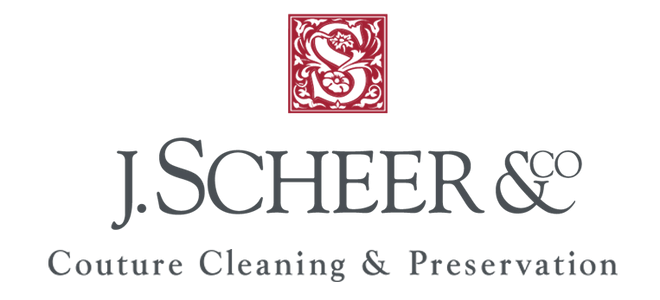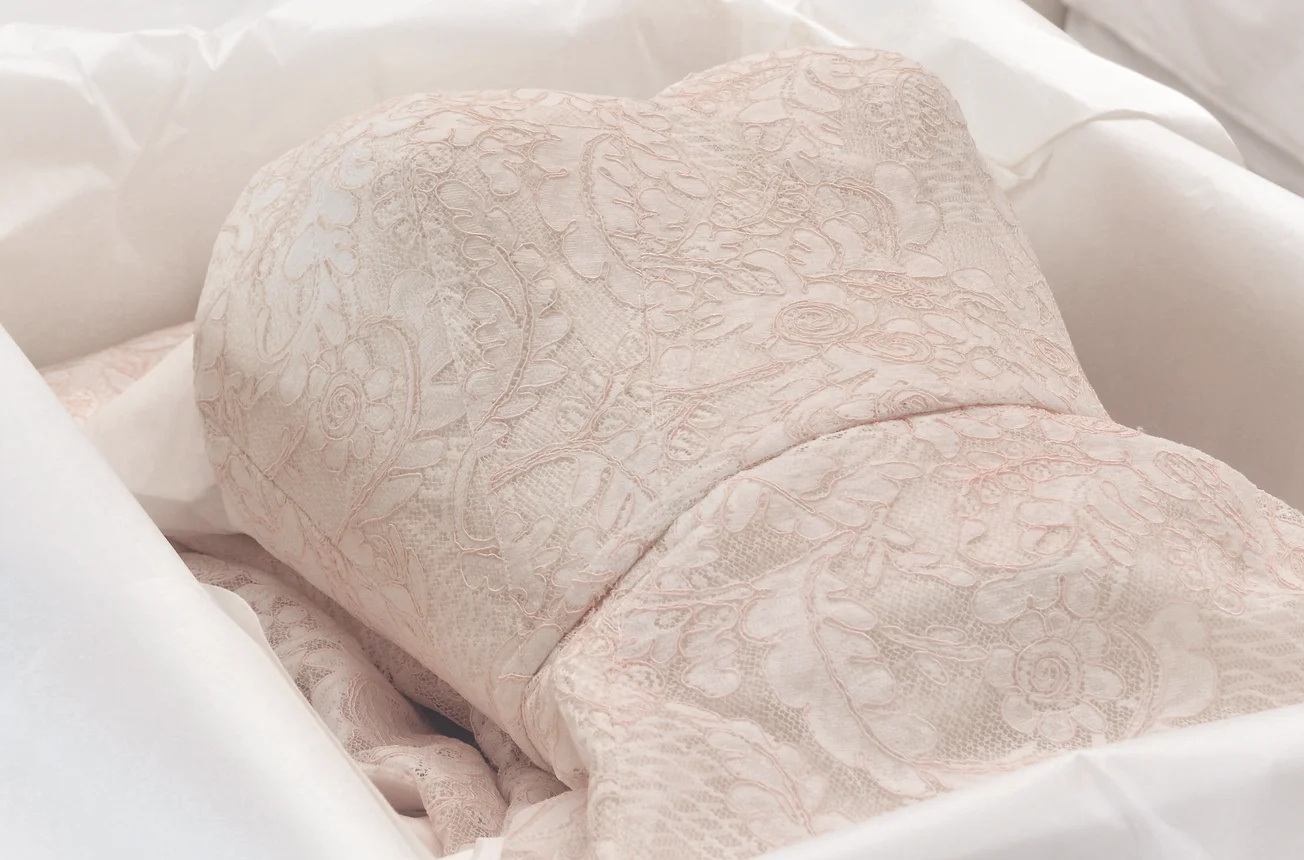Yellowing is a sign of aging. There is beauty in aging and forming a patina is part of the natural life cycle of textiles. Garments made from natural materials like silk, wool, cotton, etc. will start to change color, or oxidize, as they age. This is due to a variety of factors that can be accelerated based on specific conditions.
Light, temperature, humidity, and cleanliness can all impact the aging of organic materials. Direct sunlight can cause yellowing and rapid and uneven deterioration in natural textiles. This is why museums take great care to avoid direct sunlight in the storage and exhibition of textiles in their collection.
The main culprit behind the yellowing of textiles is oxygen. This is not to say textiles should be sealed away and deprived of oxygen completely. Sealed environments can create an opportunity for trapped moist air to form mold or mildew. Oxygen wants to form molecular bonds with other chemical compounds and it has the ability to break existing bonds to create new ones which leads to instability in materials. When textiles are stored in poor environments – ones that are too hot or damp – oxygen molecules can react quickly and unevenly throughout the body of the textile. The aging process of the textile is thus accelerated.
Temperature and humidity are important factors for proper textile storage. If there is a lack of moisture in the air, textiles will become dry and brittle. Textile fibers will absorb and desorb moisture from their environment. If there are rapid fluctuations in the moisture or temperature of the air textiles are at a greater risk of damage. The shape of the garment can distort and extreme changes can act as a catalyst for chemical reactions.
If a textile is stored away uncleaned, remaining stains or soils will become oxidized. These substances will continue to absorb into the fibers and oxygen will react more readily with the substances remaining on the textile. This will create dark spots throughout the fabric. Even if staining is not visible to the eye, storing unclean textiles can be deleterious. For example perspiration can often dry clear on clothes. The acidity from stains like perspiration soiling or wine staining will cause yellowing to occur more aggressively on a garment. The acidity can then spread throughout the fibers creating a more brittle and yellowed textile. Stains left on garments in storage provide ample opportunities for oxidation. If you were to leave a bottle of wine open for too long it would oxidize, losing flavor and turn a brown hue. The same is true in terms of coloration if a wine stain is left untreated on a textile.
The goal of storing textiles is to slow the aging process. Aging cannot be prevented but conservation professionals use materials and storage methods to help retard the process so that the textile ages gracefully and forms an even patina. We provide textiles in our care with environments that promote slowing the aging process and we empower clients with the tools and information necessary to make good decisions when it comes to safe long-term storage.
© 2024 J. Scheer & Co., Inc. All Rights Reserved

